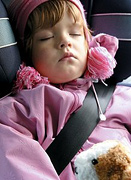 |
 |
|
|
Health Articles:
Alternative and General Health
Musculoskeletal Health
Nutrition and Herbs
Pediatric Health
Senior Health
Sports & Fitness
Women's Health
Ask A Doctor (Forum)
|
Why Your Choice of Booster Seats Could Be Putting Your Child at RiskBy Arthur Croft, DC, MSC, MPH Automobile seats are designed to comfortably contain adult occupants. Of more critical importance, these seating systems, which include, among other things, the seat belt and shoulder harness, were designed to optimally protect adult occupants in the unhappy event of a high-velocity crash. Why Children Need Booster Seats Are children at a disadvantage if using only the standard automobile seat belt and shoulder harness? Yes, for two reasons. One reason is that the lap portion of the safety webbing is designed to distribute high-acceleration loads across the pelvis in the event of a frontal collision. In youngsters, this belt typically will ride up over the pelvis such that the child bears all of the force over the stomach, with the internal organs being crushed between the spine and belt. In more severe accidents, spinal injuries can occur. Often these occur in collisions that adults, riding restrained in the front seat, do not perceive as severe. Because of the resiliency of the pediatric spine, gross dislocations and spontaneous reductions can occur, which are difficult to find later without very careful attention to diagnostic (i.e., MRI) details.
The other reason kids are at a distinct disadvantage in high-speed crashes is related to the shoulder sash or shoulder harness. Whereas in adults, it crosses safely over the shoulder near the clavicle, in children sitting lower in the seat, it crosses dangerously across the neck, threatening both the spine and vital blood vessels in the neck. The booster seat exerts its main effect by simply elevating the youngster in the seat, so that both the lap belt and shoulder harness fit the child more like they do an adult. Studies have demonstrated that youngsters using booster seats and standard restraints are much safer than youngsters using the restraints without the booster. You can find more information on the Web site of the National Highway Traffic Safety Institute (NHTSA). However, as it turns out, you can't trust everything you read, even from the government. Which Booster to Choose? There are two kinds of booster seats. The most basic kind is a simple seat booster: the so-called backless booster seat. The other type is a seat bottom/back combination: the high-back booster. Most of these also have a back high enough to serve an additional important function as a head restraint. Most also have side head protection to prevent bending of the head and neck in the even more unhappy event of a side-impact collision. |
